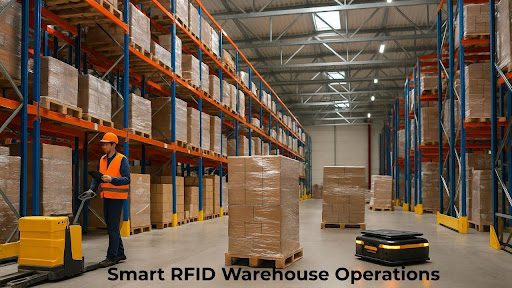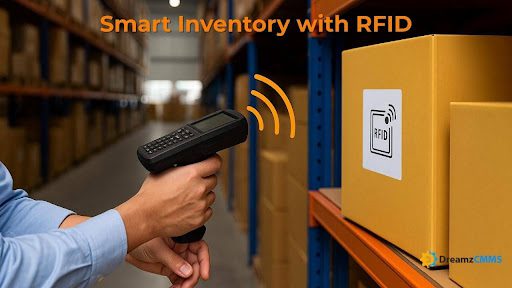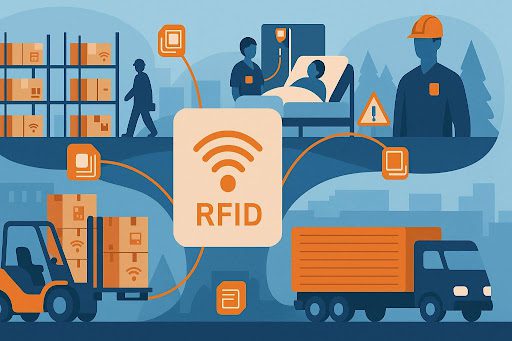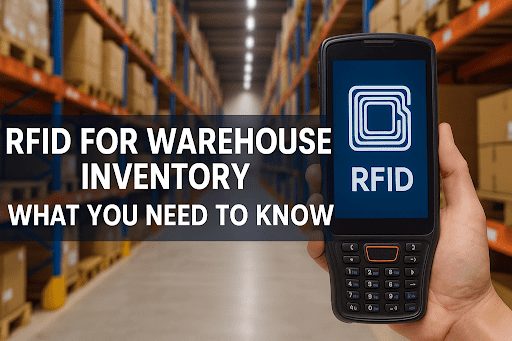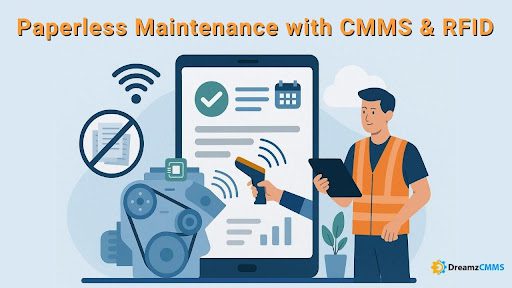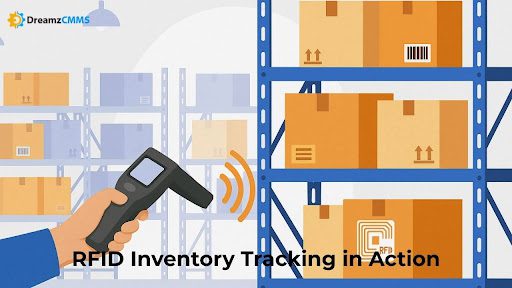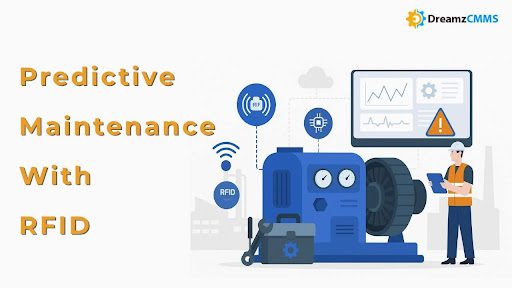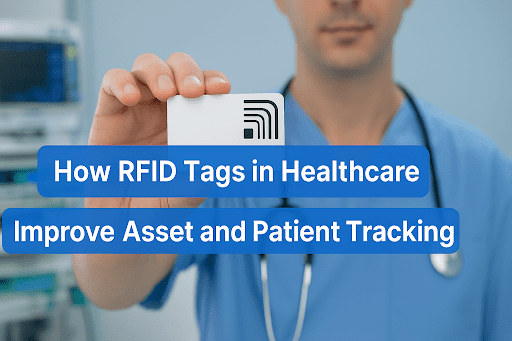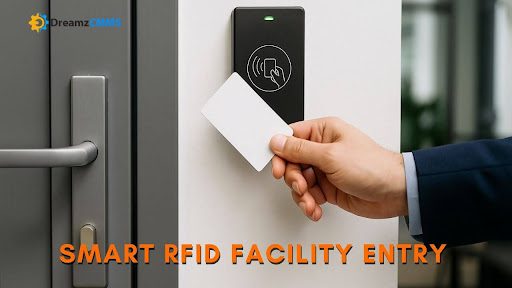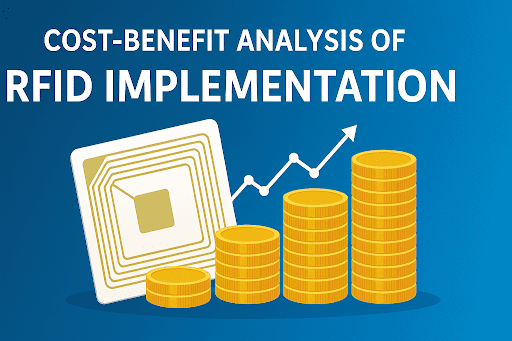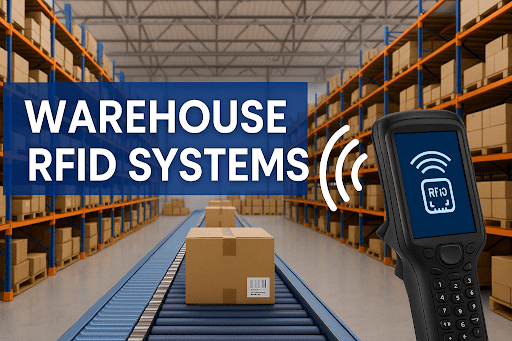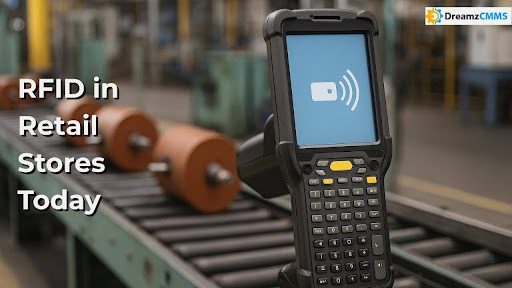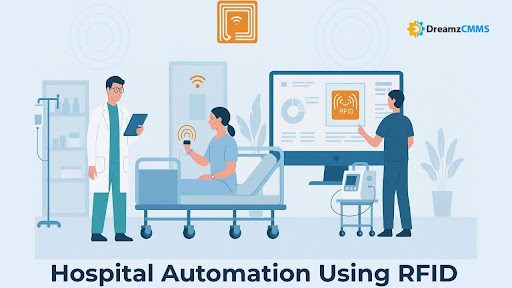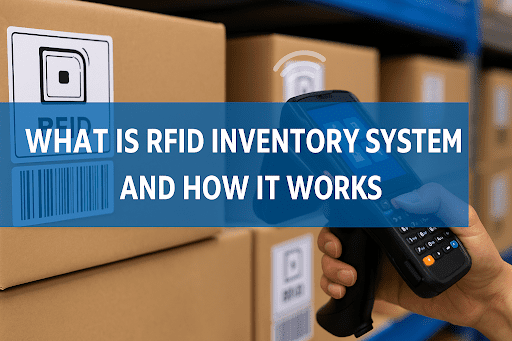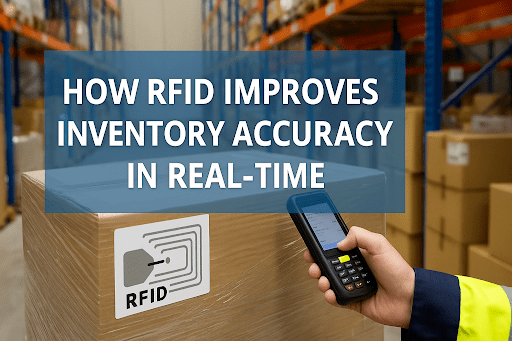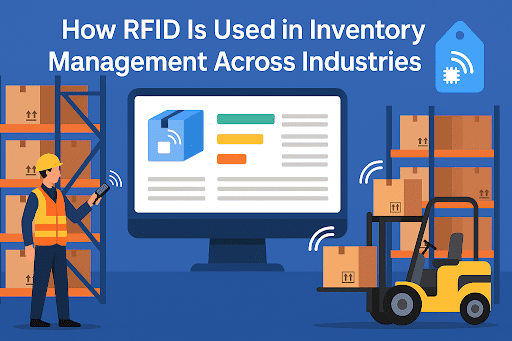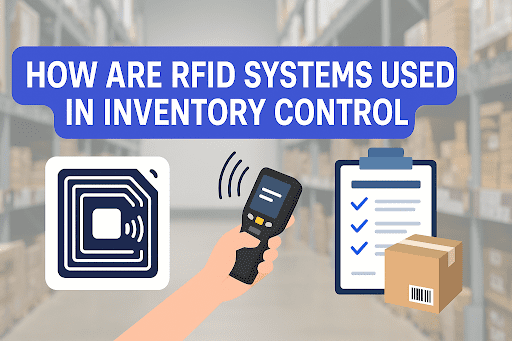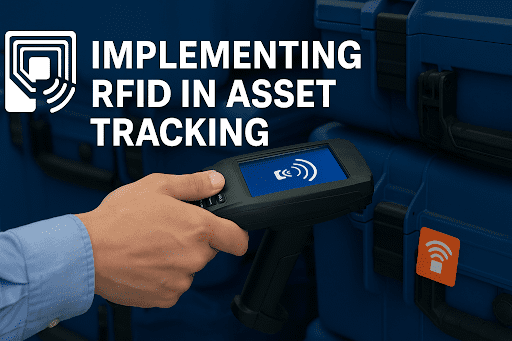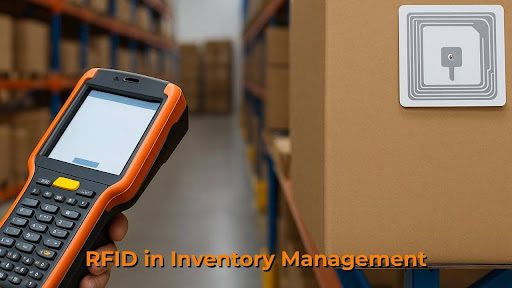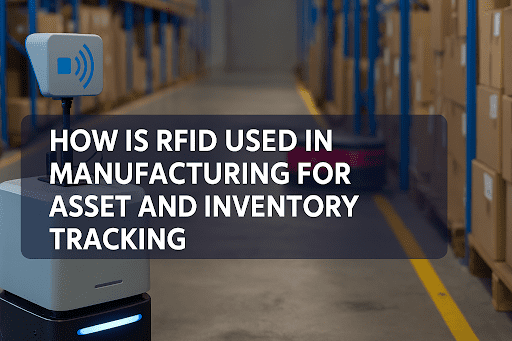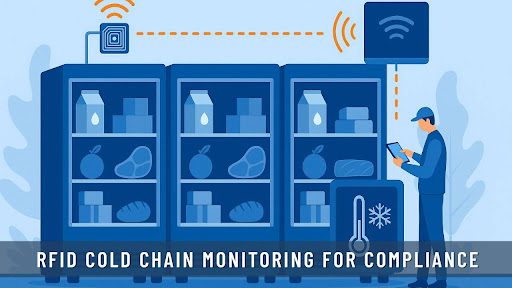 BACK TO Blog
BACK TO Blog
Asset Rental Management
RFID Asset Tracking
Modern supply chains operate under intense pressure because organizations must enhance their accuracy and shorten delays and reduce human mistakes. RFID stands as the core digital transformation technology which revolutionizes stock management operations. The core essence of RFID inventory management involves understanding both its fundamental operation and its transformative impact
- August 05, 2025
- DreamzCMMS Team
- 10 minutes read

- August 05, 2025
- DreamzCMMS Team
- 10 minutes read
Modern supply chains operate under intense pressure because organizations must enhance their accuracy and shorten delays and reduce human mistakes. RFID stands as the core digital transformation technology which revolutionizes stock management operations. The core essence of RFID inventory management involves understanding both its fundamental operation and its transformative impact on inventory control systems.
The comprehensive document explains RFID inventory systems by describing operational principles alongside industrial sector applications in retail and healthcare along with construction and logistics operations. Modern CMMS platforms leverage RFID technology while comparing RFID systems to barcodes and establishing effective RFID inventory workflow implementation methods.
Boost Inventory Accuracy with Maintenance Integration
Organizations seeking inventory tracking capabilities need to implement RFID technology as their next step. The combination of RFID systems works with advanced asset lifecycle management tools through contemporary CMMS.
With Asset Maintenance Management Software, you can:
Introduction to RFID Inventory Management
The application of RFID technology for inventory item tracking and management forms the foundation of RFID inventory management. The RFID inventory control system functions through RFID tags combined with readers and antennas and inventory management software to provide automated stock management.
The inventory items receive RFID tags that carry SKU information and batch number details and expiration dates. The facility-wide placement of RFID readers enables automatic tag detection without manual scanning or line-of-sight requirements. The system tracks inventory movements and detects irregularities while making immediate decisions based on data. The result? The combination of improved precision with reduced personnel expenses and enhanced operational performance.
Business organizations now adopt RFID Asset Tracking Software for real-time experiences because it integrates effortlessly with enterprise systems.
How RFID Inventory Systems Work
RFID inventory control systems function through the combined operation of hardware elements and software components which provide automatic real-time inventory tracking. The intelligent system operates through these fundamental elements.
RFID Tags
The system depends on RFID tags which represent tiny electronic devices used to attach products and containers and equipment. The microchip inside RFID tags maintains unique information (SKU and product type and batch number or expiration date) while the antenna communicates through radio waves with readers.
There are two main types of RFID tags:
- Passive RFID Tags
The RFID tags lack their own power source. The tags acquire power from the electromagnetic signals which RFID readers generate. Passive tags function well for item-level tracking in retail stores and pharmacies and warehouses because of their affordable price and compact dimensions. These tags operate at a maximum reading distance of 10 meters while serving to track large quantities of inexpensive stock. - Active RFID Tags
Active RFID tags contain internal power sources that let them transmit their signals while reaching distances greater than 100 meters. The tracking of expensive mobile assets including vehicles and shipping containers and heavy equipment and rental machinery relies on active RFID tags. The tags include built-in sensors that allow them to send temperature and motion and environmental data thus serving complex logistics and industrial needs.
RFID tags function as electronic inventory markers to automate detection and tracking and auditing tasks while eliminating human interaction.
RFID Readers
RFID readers detect and decode the signals which RFID tags produce. The available reader formats depend on the particular application requirement.
- Fixed Readers
The installation of fixed readers takes place at important points throughout the facility including warehouse entry points and conveyor belts and shipping areas and storage areas and retail departure points. The central system receives automatic data from these readers when tagged items pass through checkpoints. Fixed readers provide essential functionality for automatic inventory monitoring without human involvement. - Handheld Readers
Staff members utilize mobile RFID scanners for manual audits and stock verification as well as field operations due to their portable design. The devices enable spot scanning operations particularly well in areas where there is limited infrastructure or when managing mobile assets including rental equipment.
The deployment of hybrid systems becomes possible when both reader types join forces to offer complete coverage of static and dynamic inventory locations.
RFID Antennas
The connection between readers and tags relies on RFID antennas which function to enhance and guide radio wave signals. The application determines which type of antenna will work best. These are two different types of antennas that serve different purposes in RFID applications.
- The wide open spaces of warehouses require omnidirectional antennas that function as a broad coverage solution.
- Directional, focused on a narrow beam for precision reading, useful for chokepoints like doorways or conveyor lines
Correct placement of antennas leads to better tag detection rates while decreasing system interference which enhances the overall performance of the system.
RFID Inventory Software
All the data captured by readers and antennas must be stored, interpreted, and visualized—this is where RFID inventory management software comes in. The software functions as the fundamental operational center of the solution.
Key functions include:
- Real-time stock level tracking across multiple zones or warehouses
- Auto-generated low-stock alerts and reorder triggers
- Reporting dashboards with drill-down views of inventory history and movement
- Audit trails and compliance reporting
- Integration with CMMS with RFID inventory features to connect inventory data with equipment maintenance, spare parts usage, and service scheduling
Leading platforms like RFID Asset Tracking Software provide users with simple plug-and-play capabilities to integrate with ERP, CMMS and rental systems thus creating a complete asset management experience.
The system achieves accurate inventory tracking through middleware data management which maintains both system performance and inventory precision.
Benefits of RFID in Inventory
RFID inventory management brings numerous extensive advantages that transform inventory processes.
Accuracy Beyond 98%
The RFID system provides stock accuracy rates of 99.9% that decrease stock shrinkage and eliminate physical and recorded stock discrepancies.
Labor Savings
The time required to scan RFID tags for inventory purposes reduces to mere seconds since each tag does not need individual attention. The result produces quicker audits and reduces both operational delays and labor expenses.
Inventory Automation Using RFID
RFID inventory automation enables both automatic restocking when quantities drop below set limits and immediate notifications about misplaced items. The automation of inventory tracking eliminates human supervision requirements and improves supply chain efficiency.
Enhanced Security and Theft Prevention
The tracking system detects unauthorized asset movements by triggering alerts when items move beyond authorized zones which helps prevent internal theft and unauthorized asset transfers.
Smarter Decision Making
Real-time data enables managers to analyze trends and monitor reorder points which leads to improved warehouse layout and enhanced productivity.
Check out What is RFID Asset Tracking to learn about broader asset applications beyond inventory tracking.
RFID vs Barcode Inventory: Which Is Better?
The RFID vs barcode inventory debate centers on three essential factors including speed and accuracy along with functional capabilities. RFID inventory systems operate in comparison with barcode systems in practical applications as follows:
- Scanning Process: Barcodes need line-of-sight, RFID doesn’t.
- Bulk Scanning: RFID systems can identify hundreds of tags simultaneously during scanning operations while barcodes need individual scanning for each item.
- Durability: RFID tags are more resistant to damage and wear.
- Data Storage: RFID can store more information and be rewritten.
RFID systems offer better long-term ROI than barcode systems because of operational efficiency and real-time insights but initial costs remain lower for barcode systems particularly for smaller operations.
Industry Applications of RFID Inventory Systems
RFID technology operates within every business segment that handles physical goods. The following sections demonstrate how various sectors benefit from RFID warehouse inventory systems and stock tracking implementation.
Retail and E-commerce
RFID technology allows companies to perform just-in-time restocking while it helps prevent stockouts and enables omnichannel fulfillment. Retailers achieve market superiority through real-time inventory systems which let them combine online and in-store order fulfillment.
Manufacturing
RFID technologies track raw materials while also monitoring Work-in-Progress and ensuring inventory levels match production plans. Asset-heavy facilities benefit from integrated maintenance scheduling capabilities with RFID systems.
Healthcare
Hospitals alongside clinics implement RFID technology for medical supply tracking and expiration date management alongside regulatory compliance requirements. The RFID tag tracking system enables healthcare organizations to prevent essential shortages of medical supplies and medical equipment.
Construction
RFID technology enables construction sites to control their tools and track material consumption as well as enhance workplace safety standards. Find RFID in Construction operations within this industry-specific guide.
Logistics and Rental Operations
Rental companies implement Asset Rental Management Software that includes RFID features to track equipment while managing schedules and optimizing the quick turnaround of high-value rentals. The implementation of RFID technology allows organizations to track their shared assets and maintain traceability. RFID brings traceability and accountability to shared assets.
RFID Inventory Workflows in Modern CMMS
Modern Computerized Maintenance Management Systems (CMMS) use RFID technology to enhance their inventory management software capabilities. The system enables facility managers to:
- The system produces maintenance orders automatically through RFID-tagged equipment passing usage thresholds.
- Track maintenance parts in real-time
- The system enhances both audit operations and compliance requirements because of traceable records creation.
The result is a seamless bridge between asset performance and inventory control, improving reliability and reducing downtime. Blockchain Asset Tracking benefits from the combined strength of this synergy to enable digital traceability.
Challenges in Implementing RFID Inventory Systems
The implementation of RFID technology offers advantages but organizations face specific obstacles during its adoption.
Higher Initial Costs
The initial cost of RFID tags and infrastructure exceeds that of barcode systems particularly when using active tags for large-scale installations.
Environmental Interference
RFID signals become interrupted by the presence of metals or liquids thus organizations need special tags or reader positioning approaches.
Integration Complexity
Your RFID system must link with ERP, WMS or CMMS platforms but this integration becomes difficult when you lack vendor assistance.
Training
Staff members require training about RFID readers together with software operations and protocol protocols to achieve proper implementation.
The majority of these obstacles become surmountable when organizations implement a structured deployment plan alongside assistance from professional RFID solution experts.
How to Successfully Deploy RFID Inventory Management
Your organization can transition from traditional systems to RFID through these best practices for implementing an RFID inventory workflow:
- The first step should be to establish clear KPIs for business objectives such as stockout prevention or audit time reduction.
- Implement RFID testing within a particular area such as a warehouse zone or product line to detect initial system problems.
- The selection of tags depends on your product type along with your required range and environmental conditions.
- Your system needs to accept RFID data entry and produce reports through its CMMS or WMS functionality.
- Provide hands-on training to warehouse staff and inventory managers as well as IT personnel.
- Organizations should analyze collected data to enhance layouts and decrease waste while optimizing reorder cycles.
A fully deployed RFID system enables complete transformation of stock management across every location by lowering costs and decreasing risks and equipment downtime.
Final Thoughts
So, what is RFID inventory management?
The smart data-driven RFID inventory management system tracks inventory through radio frequency technology to automate stock counting and movement monitoring and replenishment operations. RFID enables real-time monitoring through its technology to boost accuracy while uniting maintenance and inventory operations with modern CMMS tools.
RFID evolved from high-tech choice into an essential competitive tool which serves various sectors including retail and healthcare and construction and logistics.
Unlock Smarter Inventory with DreamzCMMS
The process of inventory management should avoid manual work and errors and time-consuming procedures. Through DreamzCMMS you can access an RFID-enabled platform which unifies inventory management with automated workflow capabilities and real-time asset monitoring across warehouses and rental yards and retail networks.
Ready for More?
Talk to one of our CMMS experts and see how DreamzCMMS can simplify your maintenance operations.
Book a free consultation
